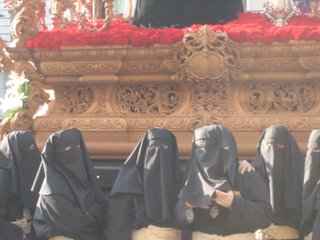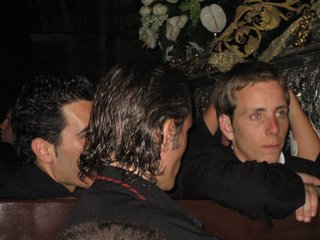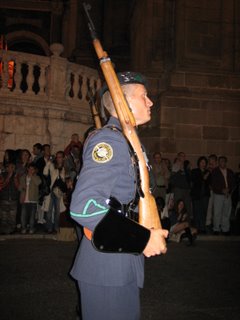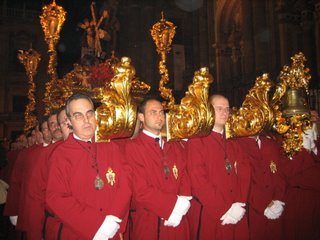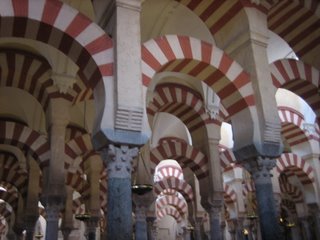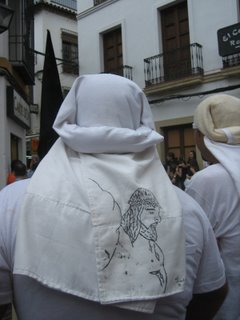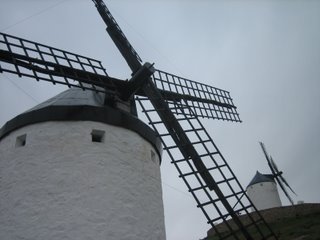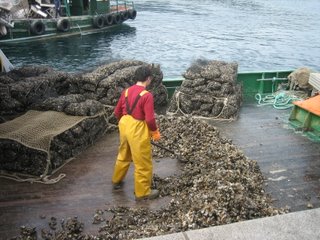This morning in Toledo I squeezed our breakfast orange juice, just like I did yesterday. Well I fed oranges into a squeezing machine and out came juice. 4 oranges = 1 glass of cold fighting, full of Vitamin C, orange juice. A good start to the day. We needed all the sustenance we could get to cope with the huge groups of aimless, bewildered day trippers that thronged the narrow Old Town streets. Toledo is roughly an hours drive south from Madrid and judging by the amount of coaches parked in serried ranks outside the city walls it figures high on the 'Sights to See in Spain' Top 10.
My Top Tip for Toledo is stay overnight, do your sightseeing early in the morning and again in the evening when you don't have to fight your way through the hordes. It is another (oh how blasé am I ...) World Heritage site, it used to be the capital of Spain before Philip II decamped to Madrid and it deserves a little attention. Have a long leisurely lunch followed by a siesta and miss the crowds. You also get a chance to sample the cool vinotecas.

Toledo vinoteca
There is an imposing Cathedral and an Alcazar, both of which dominate the city skyline. We stayed about a 10 minutes walk away, on the other side of the Old Town, in the Old Jewish Quarter - can you imagine part of London being called that, the outcry, the claims of racial discrimination that would follow. Here it is appropriate, it gives a sense of history and important definition.

Our Toledo hotel was a converted flour mill
We visit the two remaining synagogues, the one on Samuel Levi street is free with displays of artefacts and information sheets in various languages. It touches on the wider issues of the diaspora and the subsequent expulsion of Spanish Jews as a result of the Inquisition. The second and older synagogue as its name, Santa María la Blanca, would imply, has had a chequered history. There wasn't much information available and we were sharing the building with at least six different coach parties, each with its own guide that gathered its group together and then proceeded to bellow an account of the place at them in various languages. From being a Holy Place it became a sort of Bedlam. We made an escape of sorts to the nearby Franciscan Church of San Juan de los Reyes that Ferdinand and Isabel gave patronage to in 1476. It was where the Inquisitor General, the Archbishop of Toledo hung out.
No visit to Toledo is complete without seeing some El Greco paintings. A house and museum near to where he lived and worked in Toledo from 1585 displays a series of
The Apostles,
The View and Plan of Toledo, the
Tears of St Peter and the altarpiece of
St Bernardine who has a small head on a strangely elongated body, the whole piece being shades of grey.
More art can be enjoyed at the exquisite Roca Tarpeya, the home and workshop from 1953 of Victorio Macho and which is now an exhibition space and headquarters of the
Real Fundación de Toledo. It was a peaceful oasis with gardens that looked out over the River Tagus and the XIII century Puente de San Martin, to the Cigarrales and the countryside of Castilla y La Mancha beyond.
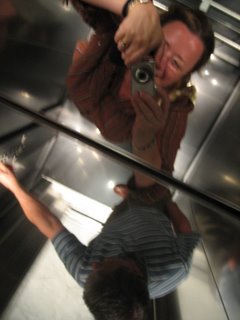
Yup .... its us!

